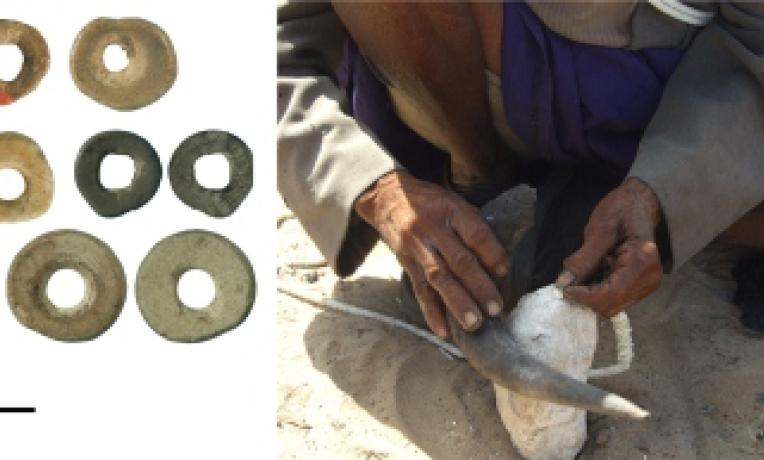Modern human culture could have emerged 44,000 years ago
In cooperation with the CNRS and University of Bergen
When did human behaviour as we know it begin? Work conducted by an international team of researchers suggests that modern culture emerged 44,000 years ago. Their analysis of archaeological material discovered at Border Cave in South Africa has demonstrated that much of the material culture that characterized the lifestyle of San hunter-gatherers in southern Africa was part of the culture and technology of the inhabitants of Border Cave 44,000 years ago. This research, funded by an ERC Advanced Grant, is published in the online edition of the Proceedings of the National Academy of Sciences.

A key question in human evolution is to determine when human cultures like ours emerged. Most archaeologists believe that the oldest traces of San hunter-gatherer culture in southern Africa date back 20,000 years. A multidisciplinary group led by Francesco d'Errico, from the French National Centre for Scientific Research (CNRS) and the University of Bergen, has revealed that modern cultural behaviour could be much older than this. The team dated and analysed objects from archaeological layers at Border Cave. Francesco d'Errico, who is working on the TRACSYMBOLS project as a co-Investigator with ERC grantee Prof. Christopher Henshilwood, said: "The results of our research undoubtedly show that the people at Border Cave were using digging sticks weighted with perforated stones, like those used traditionally by the San, 44,000 years ago."
Located in the foothills of the Lebombo Mountains in KwaZulu-Natal, South Africa, the site has yielded exceptionally well-preserved organic material. The Border Cave inhabitants adorned themselves with ostrich egg and marine shell beads, and notched bones for notational purposes. They fashioned fine bone points for use as awls and poisoned arrowheads. One point was decorated with a spiral groove filled with red ochre, which closely parallels marks that the San people made to identify their arrowheads when hunting. Chemical analysis of residues on a wooden stick decorated with incisions also reveals that it was used as a poisonous weapon containing ricinoleic acid. People at Border Cave also used a lump of beeswax, mixed with the resin of toxic Euphorbia, and possibly egg, wrapped in vegetal twine made from the inner bark of a woody plant.
Francesco d'Errico added: "This complex compound used for hafting arrowheads or tools, which is 40,000 years old, is the oldest known evidence of the use of beeswax." The custom of arming hunting weapons with small pieces of stone is confirmed by the discovery of resin residue still clinging to some of the tools, which has been identified as a suberin (waxy substance) produced from the sap of Podocarpus. The study of stone tools discovered in the same archaeological layers as the organic remains, and from older deposits, shows a gradual evolution in lithic technology.
These findings support the view that what is perceived today as "modern behaviour" is the result of non-linear trajectories in human development. Researchers believe these archaeological processes could be better understood when they are documented on a regional scale. These future investigations could also shed light on key behavioural innovations that emerged in southern Africa.


